
Keys Cambridge English for Engineering Teachers Notes
.pdf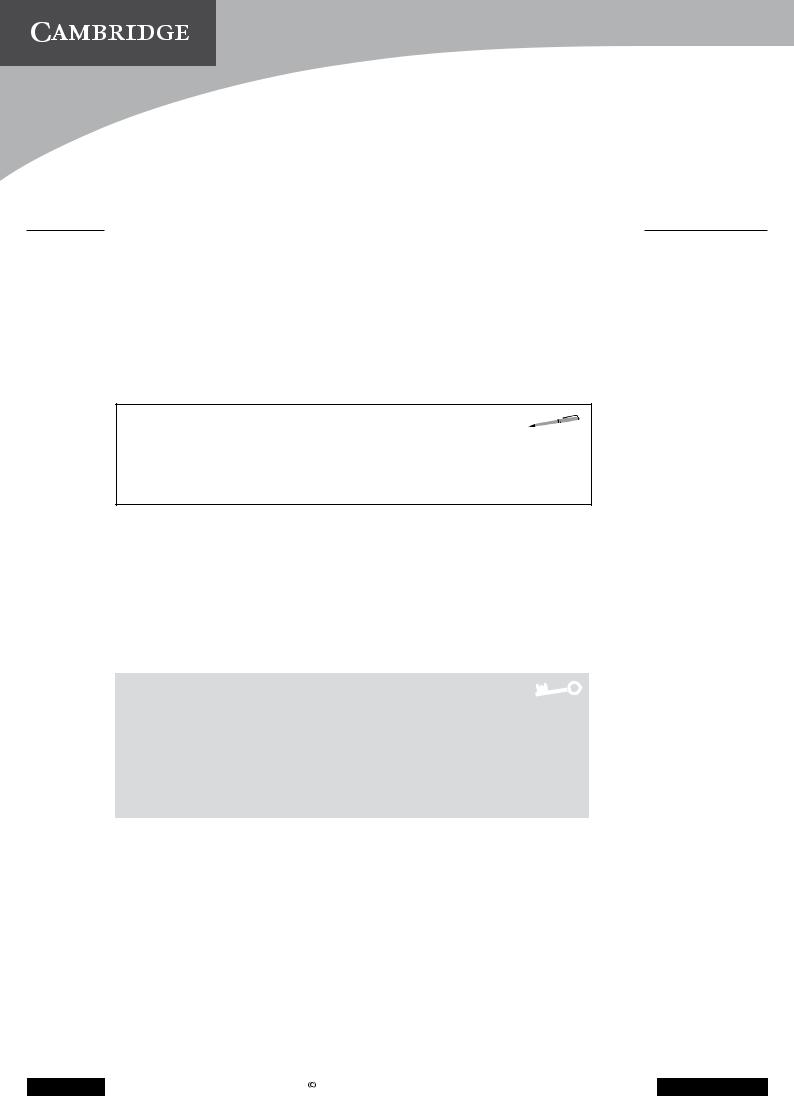
Professional English
Cambridge English for
Engineering
TEACHER’S NOTES
UNIT 7 Procedures and precautions
•Describing health and safety precautions
•Emphasising the importance of precautions
•Discussing regulations and standards
•Working with written instructions and notices
 Go to page 91 for essential background information and useful web links.
Go to page 91 for essential background information and useful web links.
 Describing health and safety precautions
Describing health and safety precautions
Language note
You will find the following vocabulary useful in this section.
confined space, corrosive, exposure (to a danger), (naked) flame, flammable, irritant, spark, toxic
ear protection, eye protection, gloves, mask
Before you begin …
Ask students to explain what is meant by health and safety. Health refers to medical issues, i.e. whether or not someone is ill/sick, whereas safety relates to avoiding accidents/injuries/getting hurt. Ask students to give some examples of health issues in industry, for example being exposed to toxic liquids or gases which can cause illness/sickness, and safety issues, for example wearing a hardhat as protection from falling objects.
1 Students complete the task in pairs.
Answers
Working with machines that have cutting wheels and blades; work at a
high level where there’s a risk of falling; work in excavations and tunnels where there is a risk of collapse or dangerous gases; lifting heavy objects with cranes where there is a risk of falling objects; processes that use high-pressure vessels and hoses/pipes where there is a risk of explosion; working with high-voltage electrical circuits where there is a risk of electrocution; processes that use flammable liquids and gases where there is a risk of fire or explosion.
81 |
Cambridge English for Engineering |
Cambridge University Press 2008 |
Photocopiable |
|
www.cambridge.org/elt/englishforengineering |
||||
|
|
|||
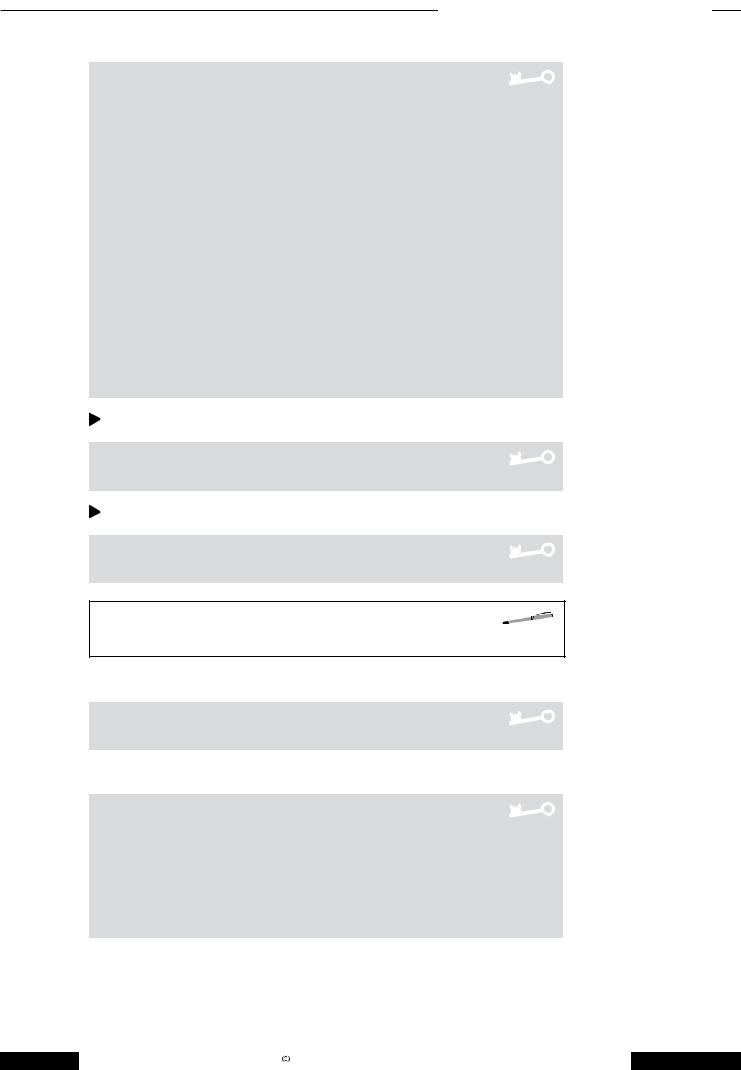
UNIT 7 Procedures and precautions Teacher’s Notes
2 a Students complete the task in pairs.
Suggested answers
1hazardous substances: dangerous materials, for example acid,
asbestos; PPE: protective clothing and accessories, for example protective gloves, safety glasses
2harmful: dangerous to health, for example chemicals that cause skin rashes; fumes: vapour or smoke, for example from liquid chemicals that evaporate at room temperature; asphyxiation hazards: danger of suffocation, for example due to concentrations of carbon dioxide / lack of oxygen
3fire/explosion hazards: substances that could burn or explode if exposed to naked flames or sparks, for example petroleum products, butane/propane gas, alcohol
4guards: protective shields around dangerous machine parts, for example the guards over the tops of circular saw blades
5guardrails: rails at waist level to prevent people from falling, for example along the edges of high-level walkways and platforms; emergency exits: doors to allow rapid escape/evacuation, for example fire exits
6electrical installations: situations involving contact with exposed electrical conductors such as electrical maintenance or work operations close to highvoltage cables
7noise hazards: loud noise that can damage hearing, for example loud machines
b 7.1 Students listen and match the extract to the agenda item.
Answers
a 2 b 7 c 1 d 3
c 7.1 Students listen to the recording again and match the words and definitions.
Answers
2 e 3 b 4 g 5 f 6 a 7 h 8 c
Language note
flammable and inflammable have the same meaning.
d Students complete the task. The first picture shows a hardhat, or safety helmet.
Answers
ear protection, gloves, eye protection, mask
e Students complete the task in pairs.
Suggested answers
1This is a confined space. You need to test the air using a CO2 detector.
2This is a corrosive substance. You need to wear gloves and eye protection, and a mask for protection from the fumes.
3This makes sparks and is a noise hazard. You need to wear eye protection, ear protection and gloves.
4This is a harmful substance. You need to wear gloves, and if there’s a risk of splashing, eye protection.
82 |
Cambridge English for Engineering |
Cambridge University Press 2008 |
Photocopiable |
|
www.cambridge.org/elt/englishforengineering |
||||
|
|
|||
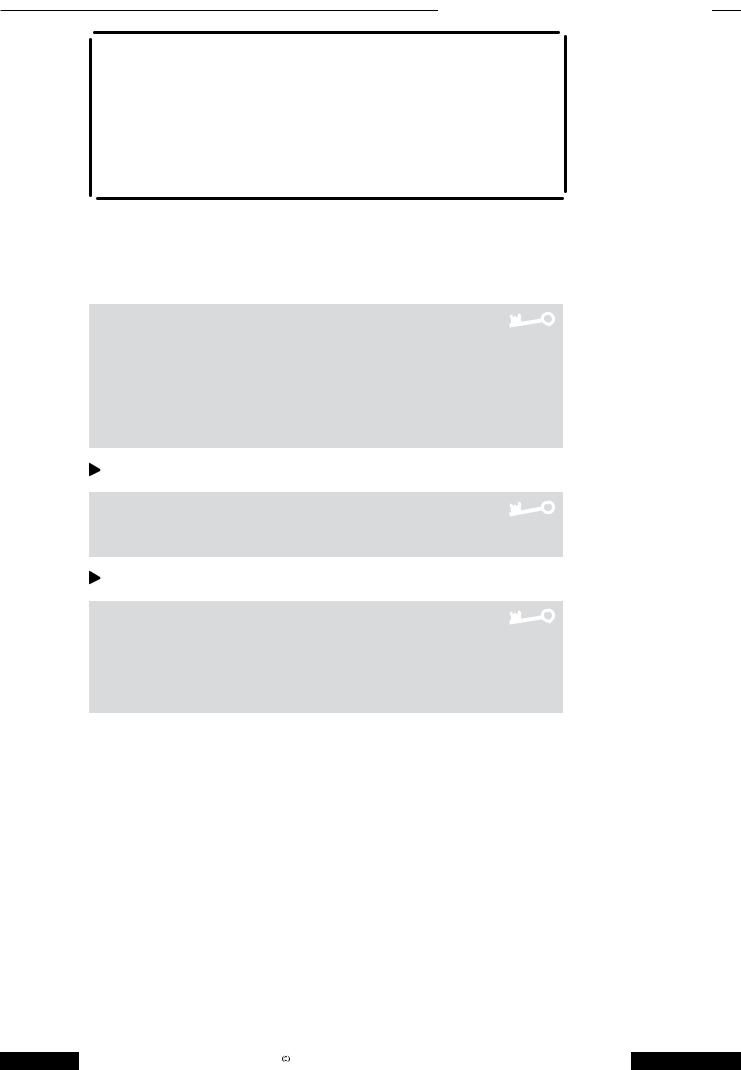
UNIT 7 Procedures and precautions Teacher’s Notes
Extension activity: PPE (Resource sheet 7a)
Give students Resource sheet 7a. Students complete the table.
Answers |
|
|
|
2 |
ear defenders |
7 |
safety harness |
3 |
safety boots/shoes |
8 |
goggles |
4 |
welding mask |
9 |
overalls |
5 |
dust mask |
10 |
gauntlets |
6 |
respirator |
|
|
Before you begin …
Ask students to explain what is meant by silo (= large tank-like container for storing granular materials or powder, for example a grain silo).
3 a Students complete the task in pairs.
Suggested answers
1An analysis/prediction of the dangers involved in a working operation
2A safe working procedure/method
3Some maintenance work, which includes welding, is going to be carried out in the bottoms of some large grain silos (silo = storage tank for solid substances / powders)
4Getting inside the silos
5See audioscript 7.2 on page 91
b
c
7.2 Students listen and make notes.
Answers
1Risk of someone falling; risk of gas bottles falling on someone
2CO2; fumes from metal; dust (explosion hazard)
7.2Students listen again and answer the questions.
Answers
1Access hazards: external staircase and internal ladder for safe access
for workers, lower bottles into silo with a rope and make sure no workers are
underneath in silo. Confined space hazards: use a CO2 detector, use an air extractor.
2An air extractor could blow dust into the air and make the problem worse.
Before you begin …
Look at the meaning of the following terms. petrol (American English = gasoline)
shot-blasting = firing small metal balls, propelled by compressed air, as an abrasive cleaning process
83 |
Cambridge English for Engineering |
Cambridge University Press 2008 |
Photocopiable |
|
www.cambridge.org/elt/englishforengineering |
||||
|
|
|||

UNIT 7 Procedures and precautions Teacher’s Notes
4 Students complete the task in pairs.
Answers
One of the main dangers is from petrol fumes inside the tank, as there’s
a risk of explosion due to sparks and flames. The workers will have to be careful that there’s no petrol inside the tank. The petrol will have to be drained and the inside will need to be washed out with water and detergent. The opening can then be flame-cut through the steel wall of the tank using an oxy-acetylene torch. PPE required for this job is eye protection (a welding mask), gloves and heavy overalls to protect the worker from molten metal. Alternatively, the cutting can be done with an angle-grinder. To be safe, the worker using the grinder will need to wear eye protection, ear protection, gloves and overalls. When welding the new pipe, the welder will need to wear eye protection (a welding mask), gloves and overalls. If arc welding is used and there are other people working nearby or passing by, screens should be placed around the welder to protect other people’s eyes from flashes. When shot-blasting, the main dangers are to the eyes, and from noise and dust. Screens should be placed around the area and workers should wear eye protection, ear protection, dust masks, gloves and overalls. Before painting, it’s important to read the safety documentation provided with the paint, as PPE may be required – for example, gloves, eye protection and possibly masks to protect workers from hazardous fumes. During all the operations, if any work is carried out more than two metres above the ground, scaffolding should be provided with handrails, as there is a risk of falling (workers should not stand on ladders while working). Also, all workers should wear hardhats.
Note
sand-blasting = this term is still used generically as sand was commonly used as an abrasive with compressed air. However, the dust given off by sand can cause the illness silicosis, and the technique is therefore problematic from a health and safety standpoint.
Extension activity: hazard analysis
Ask students to think of some maintenance, installation or construction work they have experience of. In pairs, they carry out a hazard analysis for the operation and come up with a safe system of work, including personal protective equipment.
 Emphasising the importance of precautions
Emphasising the importance of precautions
Language note
You will find the following vocabulary useful in this section. at all times, under any/no circumstances, every single
it’s crucial, it’s essential, it’s preferable, it’s vital
Before you begin …
Ask students to explain what is meant by emphasising precautions and to think of some ways to do this in English.
5 a Students complete the task in pairs.
Answers
1Maintenance work on low-voltage and high-voltage electrical equipment
2Changing faulty or worn-out electrical parts, such as motors; repairing loose connects or damaged wires
84 |
Cambridge English for Engineering |
Cambridge University Press 2008 |
Photocopiable |
|
www.cambridge.org/elt/englishforengineering |
||||
|
|
|||
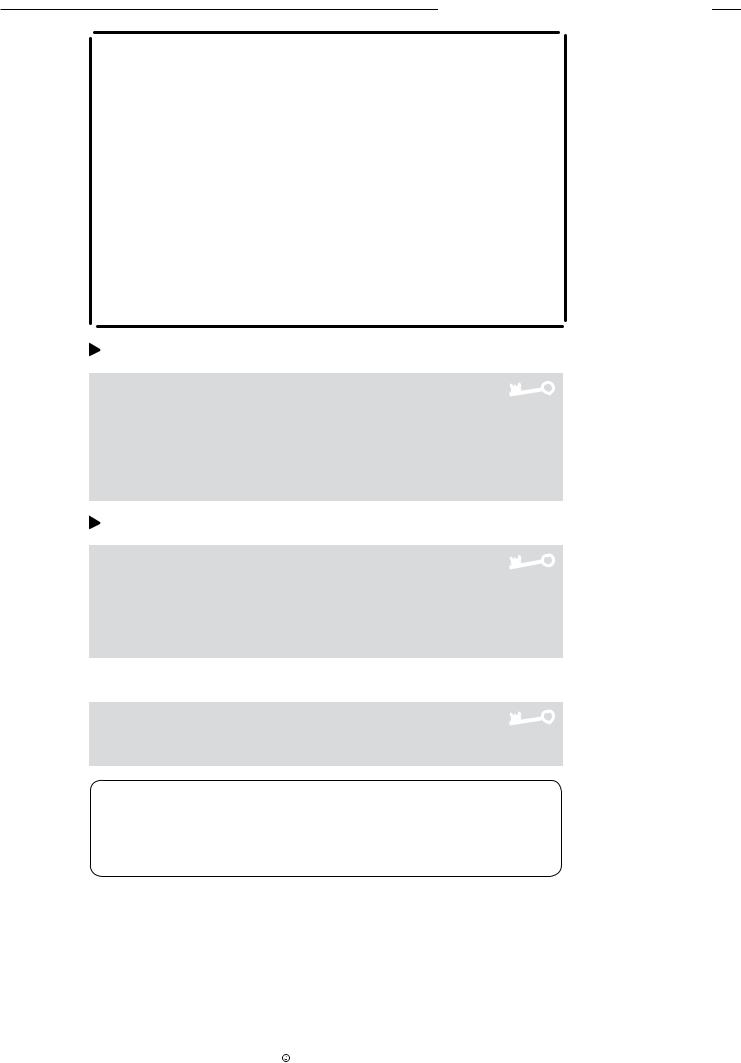
UNIT 7 Procedures and precautions Teacher’s Notes
Extension activity: more vocabulary
You could look at the meaning of some of the terms in Exercise 5a in more detail. switchboard = control panel containing several switches for all the individual circuits of an electrical installation
transformer = electrical device for modifying current and voltage
A step-up transformer increases voltage and reduces current (amps), a stepdown transformer decreases voltage and increases current (amps). In factories and buildings that consume large amounts of electricity, the mains power supply often arrives at the site as a high-voltage supply, for example 10,000 volts. In order to be used by most electrical appliances, the high-voltage supply needs to be stepped down to a much lower voltage, for example 220 to 240 volts. Hence a step-down transformer is located at the point where the mains power cable arrives on the site.
exposed conductors = bare electrical wires or bars
isolating = switching off all or part of an electrical network so that current cannot flow through it
energising = switching on the power supply to an electrical network
b 7.3 Students listen and answer the questions.
Suggested answers
1A place where a serious danger is present
2A written form giving permission to work in a restricted area
3The person responsible for electrical safety for the whole plant, and the only person authorised to issue permits to work
4The procedure of having a single key to switchboards, ensuring only one person has access to switchgear at any given time
c 7.3 Students complete the extracts and then listen again to check their answers.
Answers
1at all times
2Under no circumstances should anyone
3every single time
4just a single
5it’s vital
d Students complete the task.
Answers |
|
|
|
1 |
more |
3 |
less |
2 |
more |
4 |
more |
Pronunciation focus
Ask students to underline the stressed syllable in the following words and practise saying the words.
crucial essential preferable vital advisable
|
Cambridge English for Engineering |
Cambridge University Press 2008 |
|
|
85 |
Photocopiable |
|||
www.cambridge.org/elt/englishforengineering |
||||
|
|
|||

UNIT 7 Procedures and precautions Teacher’s Notes
e Students rewrite the precautions.
Answers
2It’s crucial/essential/vital to test the circuit is isolated.
3The alarm should be reset every single time you start the system.
4It’s crucial/essential/vital to check that the cable is not damaged.
5It’s crucial/essential/vital that you should only store non-flammable materials in this zone.
6Under no circumstances should anyone enter the restricted area without permission.
7Before pressurising the system, every single connection must be tight.
f Students complete the task in pairs.
6 a Students complete the task.
Note
The system of using helicopters to work on live power lines is based on the principle that electrical current seeks to flow into the ground. If a person touches an exposed, live electrical wire while he or she is touching, or connected to, the ground in some way then electrocution will result from electrical current flowing through the person. However, if the person is not connected to the ground in any way, then no current can flow to the earth. This practice does have other
electrocution risks. If the person touches two of the wires on the power line at the same time, a short circuit will result, and electrocution will occur. Touching a wire and any part of a pylon (which is connected to the ground) will have similar effects. Electrocution can also result from electrical arcs, as high-voltage power can jump gaps without the need for direct physical contact. The mass of the cradle and helicopter will also cause an electrical current to flow from the power line into the cradle and helicopter (albeit with a smaller current than would result from an earth connection). The latter phenomenon requires special precautions to be taken by live-line workers, who need to wear special suits containing metallic threads, which channel the electricity around the worker, based on an electrical principle known as a Faraday cage (if a body is suspended inside a metal cage that is electrified, no current will flow through the body).
c Students complete the task in pairs.
Suggested answers
1It’s essential that the crew obtain information on weather conditions. It’s crucial that pilots are highly trained and experienced. It’s vital that a tension release mechanism is in place.
2Under no circumstances should operatives work on the line without wearing hot suits and eye protection. It’s vital that the crew are highly trained.
3The cables and platform must be checked every single time they are used. It’s vital that twin-engine helicopters are used and these must be maintained to the highest standard at all times.
d 7.4 Students listen and answer the questions.
Answers
Before starting work, it’s vital to isolate the circuit at the switchboard.
Then, circuits should be systematically tested to be 100% sure that there’s no current. During work, it’s essential to tighten connections fully. And it’s crucial to ensure that no insulation is damaged. To finish, all the wires should be checked – under no circumstances should there be any loose wires. Then the circuit should be systematically tested.
86 |
Cambridge English for Engineering |
Cambridge University Press 2008 |
Photocopiable |
|
www.cambridge.org/elt/englishforengineering |
||||
|
|
|||
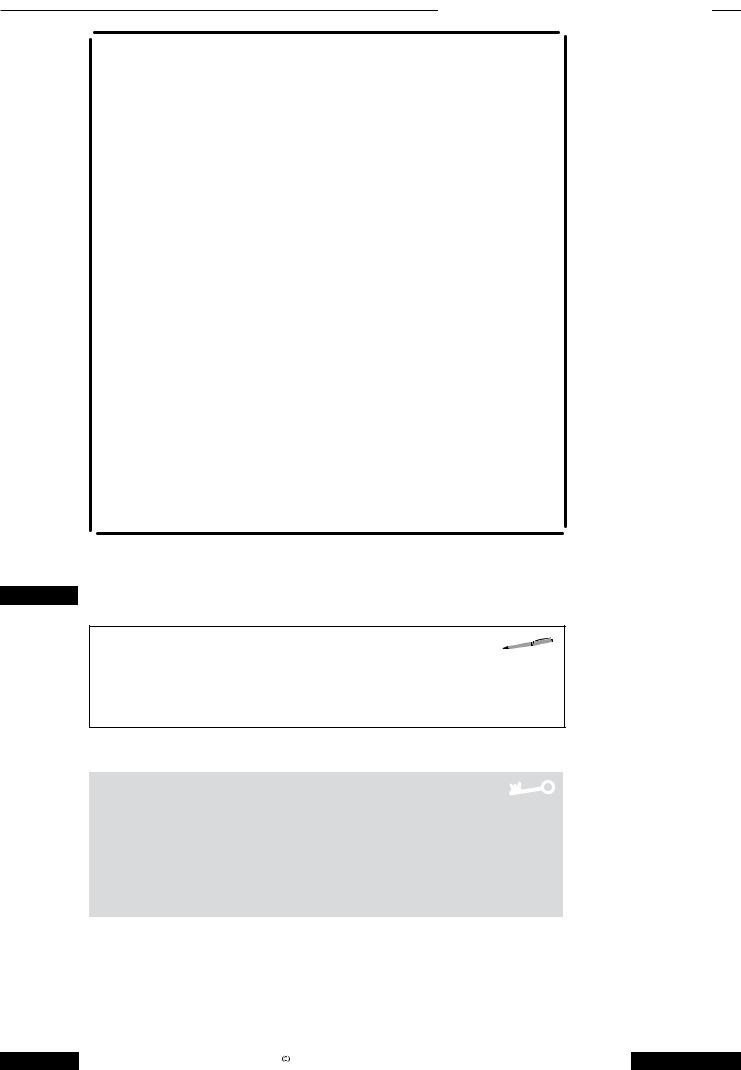
UNIT 7 Procedures and precautions Teacher’s Notes
Extension activity: live line precautions (Resource sheet 7b)
Give students Resource sheet 7b. Students complete the table.
Note
This activity requires knowledge of the basic principles of electricity.
Suggested answers
2 It’s crucial/essential/vital not to hold on to two conductors at the same time. (See previous answer)
3 It’s crucial/essential/vital not to connect yourself to a pylon using a strong, steel cable. This would result in the current earthing through you and the cable when you touched a conductor, causing electrocution.
4 There’s no need to / You don’t need to switch off the current running through the power line.
5 It’s advisable/preferable to work during dry weather. Wet conditions increase the electrical conductivity of the air, increasing the risk of electricity arcing over longer distances.
6 It’s advisable/preferable not to work during wet weather. (See previous answer)
7 It’s crucial/essential/vital to wear a hot suit with metal threads in it. This conducts electricity around the body and into the cradle.
8 There’s no need to / You don’t need to wear a parachute. A parachute would be of little use at such a low altitude.
9 It’s crucial/essential/vital not to anchor the cradle to the ground with a steel cable. This would result in the current earthing through the cable and anyone touching it.
10 There’s no need to / You don’t need to wear shoes with thick, rubber soles. The hot suit surrounds the feet, passing under the soles of the shoes. This would make the insulation provided by thick, rubber soles useless. The aim of the hot suit is to conduct electricity to the cradle floor, and thus to the mass of the cradle and helicopter.
7 Students complete the task in pairs.
Discussing regulations and standards
Language note
You will find the following vocabulary useful in this section.
adhere to, allow, authorise, banned, break the law, breach, compulsory, comply with, conform to, contravene, forbidden, illegal, law, legal obligation/requirement, legislation, obligatory, permitted, prohibited, regulation, stipulate
8 Students complete the task in pairs.
Answers
Regulations are laws; they are compulsory. For example, if companies
breach (break) safety regulations, they can be fined (given financial penalties) and, in serious cases, managers who are responsible for breaches of regulations can be given prison sentences. Standards, such as quality and design standards, are sometimes compulsory, for example the design and manufacture of motorcycle helmets or car tyres. Sometimes, however, they are optional, for example ISO quality assurance.
87 |
Cambridge English for Engineering |
Cambridge University Press 2008 |
Photocopiable |
|
www.cambridge.org/elt/englishforengineering |
||||
|
|
|||

UNIT 7 Procedures and precautions Teacher’s Notes
9 a Students complete the task in pairs.
Suggested answers
Risk of fire/explosion – no smoking, the provision of fire-fighting
equipment and training. Danger of people falling from tall structures and into water – handrails required to give edge protection and life jackets need to be worn in certain situations. Risk of skin irritations from petroleum products – gloves and overalls required. Risk of air crashes as helicopters land and take off from platforms – special training required for pilots and special precautions needed for safe operation of helidecks.
b
c
7.5 Students listen and answer the questions.
Answers
1Specific safety regulations
2Compulsory personal protective equipment; prohibited activities, such as smoking
3That the obligations are legal requirements
7.5Students complete the extracts and listen again to check their answers.
Answers |
|
|
|
2 |
compulsory |
6 |
legislation |
3 |
prohibited |
7 |
contravene |
4 |
requirements |
8 |
comply with |
5 |
stipulated |
|
|
d Students complete the groups of synonyms.
Answers |
|
|
|
2 |
permitted |
5 |
contravene |
3 |
comply with |
6 |
legislation; requirements; obligations |
4 |
stipulated |
7 |
compulsory |
10 a Students complete the extract. |
|
|
|
Answers |
|
|
|
2 |
stipulated |
5 |
comply with |
3 |
compulsory |
6 |
requirements |
4 |
legislation |
7 |
obligations |
Before you begin …
Look at the meaning of the following terms.
helideck = raised deck/platform on which helicopters land – a helicopter landing site on the ground is usually called a helipad
overhanging = projecting/extending beyond an edge
ground crew = personnel connected with aviation who work on the ground, for example at an airport
approach = phase of flight just before an aircraft lands, also often called final approach
perimeter protection = safety installation to stop people falling over an edge, for example a guardrail/handrail
anchor points = fixing points used to secure cables
88 |
Cambridge English for Engineering |
Cambridge University Press 2008 |
Photocopiable |
|
www.cambridge.org/elt/englishforengineering |
||||
|
|
|||
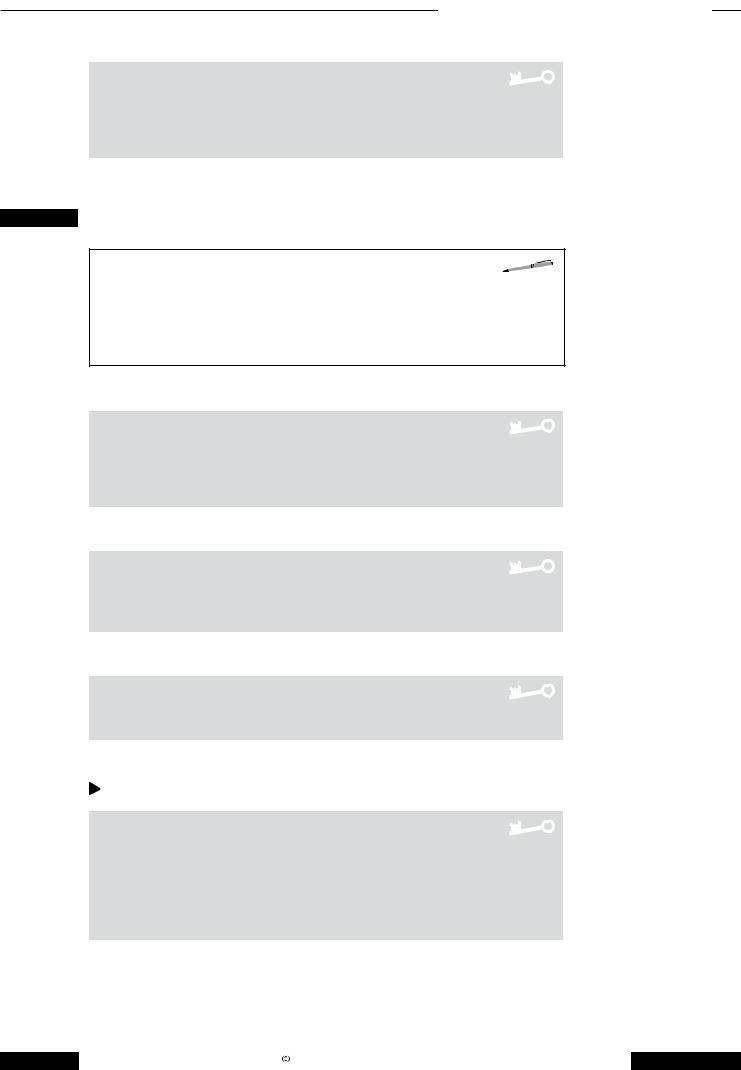
UNIT 7 Procedures and precautions Teacher’s Notes
b Students complete the task in pairs.
Answers
1to give the ground crew access to all parts of the helicopter
2to avoid risk of collisions during take-off/landing
3to avoid risk of collisions during take-off/landing
4to tie down parked helicopters
11 Students complete the task in pairs.
Working with written instructions and notices
Language note
You will find the following vocabulary useful in this section.
BEWARE, CAUTION, DANGER, IMPORTANT, WARNING
Passive, full (instead of contracted) forms, omission of articles
when/before ...ing, in the event of (=if), as (=because), therefore (=so), may (=can/could)
12 Students complete the task in pairs.
Answers
1Safety warnings, operating precautions for machines and maintenance instructions on machines
2Effective notices and instructions are as short as possible, use clear language, and emphasise important points, for example dangers.
13 a Students complete the task in pairs.
Answers
aCould do both
bCould damage the machine
cCould injure workers
dCould damage the machine
eCould do both
b Students answer the questions.
Answers
1danger
2important
14a b
Students answer the questions in pairs.
7.6 Students listen and identify the differences.
Answers
1sp: active (You should do it) wr: passive (It should be done)
2sp: contractions (shouldn’t, it’s)
wr: word pairs written in full (should not, it is)
3if (sp) = in the event of (wr); because (sp) = as (wr); so (sp) = therefore (wr); can/could (sp) = may (wr)
89 |
Cambridge English for Engineering |
Cambridge University Press 2008 |
Photocopiable |
|
www.cambridge.org/elt/englishforengineering |
||||
|
|
|||

UNIT 7 Procedures and precautions Teacher’s Notes
Before you begin …
Look at the meaning of blower (= a device which pumps/blows air to generate a rapid airflow). It consists of rotors which spin inside an enclosed chamber – the chamber having an inlet and outlet. The rotors of a blower spin around an axis which is at 90 degrees to the airflow, unlike fans and propellers, which spin around an axis that is in line with the airflow.
15 a Students complete the task in pairs.
Suggested answers
Objects should not be placed in front of the air inlet. The inlet grille
should be kept free from obstructions, and should be cleaned regularly. In the event of damage to the inlet grille, the blower must be stopped immediately. Serious harm may be caused by foreign bodies entering the duct, as the unit contains precision-engineered parts revolving at speed, and is therefore highly susceptible to damage.
Before starting the blower, it is important to ensure that the external vents at the end of the air-intake duct are open. When opening the vents, the adjusting handle should be fully extended. When closing the vents, the handle should be turned and allowed to return under the force of the spring. The handle should not be pushed, as this may strain the spring mechanism, and therefore result in damage.
b Students complete the task either in class or as a homework activity. c Students complete the task in pairs.
90 |
Cambridge English for Engineering |
Cambridge University Press 2008 |
Photocopiable |
|
www.cambridge.org/elt/englishforengineering |
||||
|
|
|||
